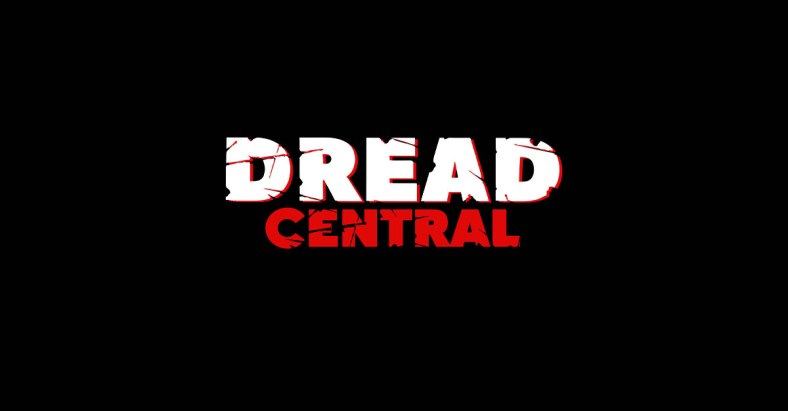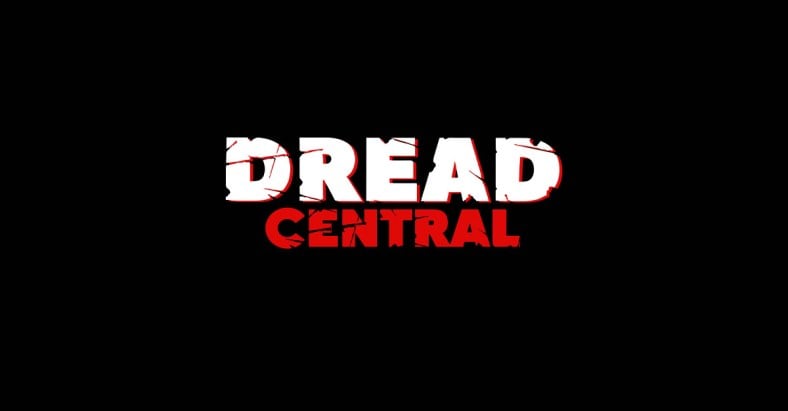Exclusive: Director Anna Biller Talks The Love Witch

Here at Dread Central we adore the Hammer horror films of yesteryear so we were delighted to hear about the new film The Love Witch, which pays homage to them. Director Anna Biller has made quite a name for herself on the indie scene with films like The Hypnotist and Viva, and she was kind enough to grant us the following interview:
DC: So, who or what is The Love Witch?
AB: The Love Witch is a woman to uses spells and magic to get men to fall in love with her. But her spells work too well, and tragedy ensues. She is a sociopath, and that’s largely where the horror comes in – the disorganization and violence of her brain. Most of the violent crimes committed by men are through hate, but Elaine, The Love Witch, kills out of love – the obsessive, all-consuming love that has caused men to fear women since the beginning of time, to fear being trapped in an emotional swamp of feelings they can’t escape from.
The Love Witch is almost frighteningly beautiful, with her mask of makeup and her long black wig conjuring up the classic beautiful witch archetype, but her beauty masks a hidden madness, much like Catherine Deneuve’s character in Repulsion. I see the witch as a metaphor for all women, for their inner power and for the fear their sexuality and autonomy inspires in men.
DC: Why did you decide to make a throwback to all the classic horror movies of the 1960s, such as the Hammer productions? Do you feel that those films are an important part of our culture?
AB: I love the style, color, and cinematography in classic horror movies and in classic movies in general. Color used to be a big part of filmmaking; whereas, today people are more concerned with tonality – say, making a film dark to convey dark emotions. I love the way colors can conjure up emotions. I’ve designed my sets using shocking colors the way Dario Argento or Mario Bava did, using lurid, bright colors to convey strong emotional messages. Horror is so much about atmosphere, and you can create so much atmosphere with set design – the types of rich Victorian interiors used in the Hammer films for instance, or the red leather booths in nightclubs in the’ 60s – or using lighting to create depth.
My cinematographer, M. David Mullen, is an expert on period lighting styles, and lighting is one of the key ingredients in creating the depth and atmosphere the older films had. Films now use soft lighting, and older films used hard lighting. Hard lighting is what made all of the contrasts in noir films, what brings out lurid colors in art direction. It’s very hard to get a D.P to do hard lighting for you nowadays since they all have their toolsets, and hard lighting is not part of that.
But I also like referencing older forms of cinema because the writing and the characters were different. It’s difficult today, for instance, to create a dramatic film about a narcissistic character because practically everyone today is a narcissist, so it would be like an echo chamber. Setting the story in a timeless world of traditional character types allows me to tell a story that’s more mythic about traditional gender roles and gender politics. I see traditional gender roles everywhere I look, and men and women being torn apart by rage and disappointment at the opposite gender, but we hide all of that now so it’s harder to bring out in characters you would see today.
[vimeo 151970316 w=800 h=450]
DC: And are you embracing the fact that the restrictions on explicit content of the period are no longer relevant?
AB: I’m not really concerned with restrictions since my ideas for this film are not explicit and didn’t require extreme gore or sex. But if I wanted to make an explicit film set in the 1960s, I wouldn’t let that era’s codes restrict me. In fact, I often think about how interesting it would be to make a sexually explicit film set in the 1930s, in a 1930s style of filmmaking.
DC: Looking at the film’s IMDb page, you’ve got a huge list of well-known actors starring in The Love Witch. How did they all come on board?
AB: Apart from several actors I’ve worked with before, I found all of them through regular casting calls and auditions. I feel very lucky to have gotten so many good actors to come on board (some very talented actors even came out for bit parts), and I think the reason I got so many good actors was that they liked the script and the project. I found a lot of unbelievably gorgeous people to be in the movie as well, both men and women. I am very inspired by filmmakers like [Pier Paolo] Pasolini, who populated his films with extraordinary looking beautiful youths and maidens as part of creating a mythic world. Some of my actors are soap opera hunks, male romance novel cover models, fashion models, ex-Playboy bunnies, prima ballerinas, famous burlesque dancers, etc.; but I didn’t cast them for that – I cast them for the pure, fresh quality of real beauty and charisma that emanates from them.
DC: How are you exploring female fantasy and the repercussions of pathological narcissism?
AB: In most films, male fantasy is apparent onscreen in the simple fact that it’s a male who drives the action, a male who yearns for the girl, fights for the girl, gets the girl, defeats his enemies, is admired for his strength and cleverness, etc. In The Love Witch a female does all of these things. She is an anti-heroine rather than a heroine because, after all, she is a serial killer, but I think it’s definitely more fun for women to watch women killing men than the other way around. I’m pretty certain that the fact that most horror movies feature men killing woman is due to the fact that most horror filmmakers are men.
There is a certain naughty pleasure in watching men killed because they were insensitive or entitled, the same naughty pleasure men probably get from watching a woman killed who is beautiful and unavailable. These are gender crimes, and they must be punished.
Just as we know that a woman who is having sex or dressing provocatively will be killed in a typical slasher film, in The Love Witch we know a man is doomed once he starts spouting off male-entitled nonsense.
Female fantasy is also satisfied by the look of the film, which features a fantasy wardrobe for Elaine full of Victorian dresses and mini-mod outfits, hunky shirtless men, a pink tea room with flowered tea sets, unicorns, rainbows, fantastic glam eye makeup, a Renaissance wedding scene, and all of the women looking absolutely fabulous. In The Love Witch you will never see a woman covered in dirt and grime, for instance, pathetic, screaming, bloody, shot at a bad angle, and improperly lit. Women in The Love Witch are fully human, fully glamorous, impeccably costumed, coiffed, framed, and made-up, not objectified naked bodies. Even the nudity comes with beautiful underwear, hair, makeup, and of course lighting. Some of Elaine’s underwear for instance came from the expensive fetish line Agent Provocateur.
As for exploring pathological narcissism, that’s a big part of Elaine’s character. She is sociopathic and selfish, and there is dawning horror as we realize just how unsympathetic she is. With Elaine we get a psychologically realistic dimensionality behind the mask of the pretty face, one that I’m sure a lot of women will identify with. Elaine is essentially a character who’s been driven mad by being constantly objectified by men and has turned this liability around and made it into an asset. But her behavior ultimately destroys her in the end, just as sociopaths always destroy themselves and everything around them.
Learn more about The Love Witch here.


Categorized:News

